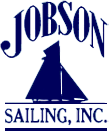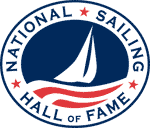By Gary Jobson
August 20, 2013Usually, when I watch a sporting event, I cheer for one team or the other. At this point in the Louis Vuitton Cup Final, I am cheering for the regatta itself. Please let’s complete a full race with both boats crossing the finish line! After three days, we have seen three races and only one boat finish each race. Is this America's Cup going to get rolling?
Breakdowns in defender and challenger trials have been numerous over the years. In every America's Cup, dating back to 1851, the boats have been on the leading edge of technology. America broke a flying jib boom during the race around the Isle of Wight. I checked with the preeminent America’s Cup historian, John Rousmaniere. He provided me with a list of several breakdowns but added, “Of course, there were breakdown in trials races, but, very few in final trials and the big show itself.” Several of these included:
- 1899 - Shamrock I lost her topmast in a race against Columbia.
- 1920 - Resolute broke her gaff while racing Shamrock IV and couldn't finish.
- 1930 - Shamrock V's main halyard broke in a race against Enterprise and she had to be towed in.
- 1983 - Australia II had serious equipment problems that cost her the first two races in the match against Liberty.
- 2003 - Race 1 NZL almost sank and withdrew from the race. Race 4 NZL broke her mast and was unable to complete that race
The late yacht designer Olin Stephens once told me the most important thing in the J Boat class, that raced in the 1930s, was to just finish. Now with the complex new boat like the AC72, why would this AC be any different?
In most sports, the MVP is one of the players, but so far I would give that honor to the shore crews of both the Italian and New Zealand teams. They are working hard to get their boats back out on the water after the unfortunate breakdowns. Today is a lay day. Both teams will be checking and re-checking every little detail. Hopefully, the breakdowns will be over. The other issue is the wind.
The Louis Vuitton Cup Final is likely to drag on for longer than anyone predicted a few days ago. Many believed Emirates Team New Zealand to be the most prepared team here. But, due to electrical problems with their hydraulics in Race Two, they were unable to finish the race. Dean Barker told me in a post-race interview that the problem was unrelated to the nose dive in Race One. But, the team did replace all its batteries for Race Three. Luna Rossa is a mystery to me. They have broken down in two of three races, with the wind under 20 knots. Is the wind limit too high? I think the Race Committee did the correct thing imposing a wind limit for the races in the interest of safety. The current wind limit is 21 knots (adjusted for the tide). For the Cup Final, the wind limit will go up to 23 knots. At that wind range, we would have had a second race on all three days. For some reason 19-22 knots seems to be the daily wind average at 2:00 p.m. This is the time the second race is usually scheduled to start. The designers, builders and shore crews are certainly spending a lot of time now preparing their boats so they do not break.
The most interesting moment of the past month took place when Oracle Team USA and Emirates Team New Zealand lined up for a speed test. This would be the equivalent of champion sprinters Usain Bolt running 30 meters against Tyson Gay during a pre-race warm up. I was on the water watching. When the line-up occurred, I quickly called for our television camera boat to record the unscheduled, impromptu scrimmage. The defenders were on the fourth leg of their in-house practice race. Jimmy Spithill and his crew were leading the Ben Ainslie team by about seven lengths. The time limit for the defender access to the course had expired, so the challengers were tuning up for their race. Suddenly, New Zealand's skipper Dean Barker maneuvered his AC 72 in between the two American boats. The race was on! I watched with great interest. Which boat would be faster? The wind was blowing about 16.5 knots. To my eye, from about a quarter mile away aboard Regardless, the race committee boat, the speeds seemed to be about even. Oracle might have been sailing a little faster, while New Zealand was sailing a lower course. I later spoke to the crews of both boats. They told me they thought their boat might have had a slight edge. That is the answer you would expect. Ben Ainslie, who was in a perfect position to see the relative speeds, told a colleague of mine that he did not see any difference in speed. After two minutes, all three boats jibed. The New Zealand boat appeared to gain over a boat length through the maneuver. Later, I reviewed the data streaming off the boats. Except for the jibe, the VMG on both boats was nearly identical.
Getting the required races completed may take several extra days. But barring any breakdowns, I think it will be over in five more races. New Zealand leads 2-1 at this writing. The reason is simple: the Kiwis sail faster upwind and downwind, and gain on every maneuver. Luna Rossa is a greatly improved boat from what we saw in July, but the average time difference will likely be over one and half minutes per race.
The America's Cup starts on September 7. Based on the brief scrimmage I saw this weekend, the 34th Defense will be a close and compelling battle. I am sure the losing boat will win several races. I am looking forward to it.





